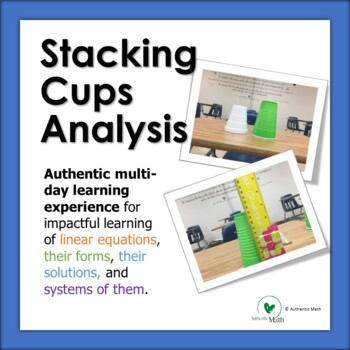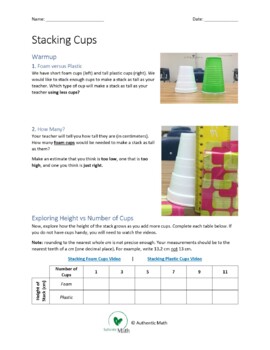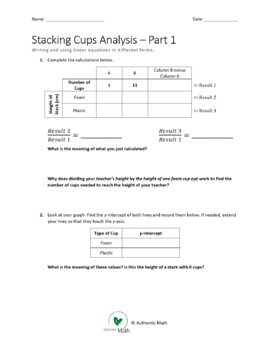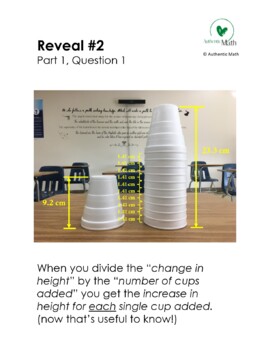Stacking Cups Analysis - an authentic in-depth discovery of linear equations!
- PDF
- Easel Activity
Description
Starting with a simple question, your class will embark on a three-to-five-day authentic learning experience that will allow your students to develop an intuitive understanding of rate of change, initial value, forms of linear equations, systems of linear equations, and their solutions! Ready?
This is a three-part learning experience.
- In Stacking Cups students independently* try to answer the question "How many cups does it take to make a stack as tall as your teacher?" by taking measurements and using their own ideas – formal knowledge of linear functions is not required!
*Independently here means without being given a formal process. Equitable group work is not only appropriate but highly encouraged. - In Stacking Cups Analysis – Part 1 students are guided through calculations that result in determining a rate of change and an initial value. They are introduced to the slope-intercept form of a linear equation and are tasked with using it to answer the original question again, now equipped with deeper mathematical knowledge. Finally, they compare this form to the point-slope form of a linear equation.
- In Stacking Cups Analysis – Part 2 students are tasked with exploring the system of linear equations present in this situation and are guided through finding its solution graphically and then algebraically. Equipped with their new (or deepened) knowledge, they are finally tasked with answering similar questions about a new type of cup they have not seen before.
Stacking Cups Analysis offers...
⭐ Student-driven discovery
⭐ Perfect for groups
⭐ Highly accessible
⭐ Online-learning friendly
⭐ Layered complexity for just the right challenge
Not sure if this is what your class needs? Get your class started with a free download of Stacking Cups, then - if you have a blast - follow-up with this analysis for concept mastery. Note that the free resource does not include the analysis parts.
About Authentic Math
Impactful and authentic math learning experiences successfully implemented in the classroom. Crafted carefully and passionately, and yours to enjoy.






